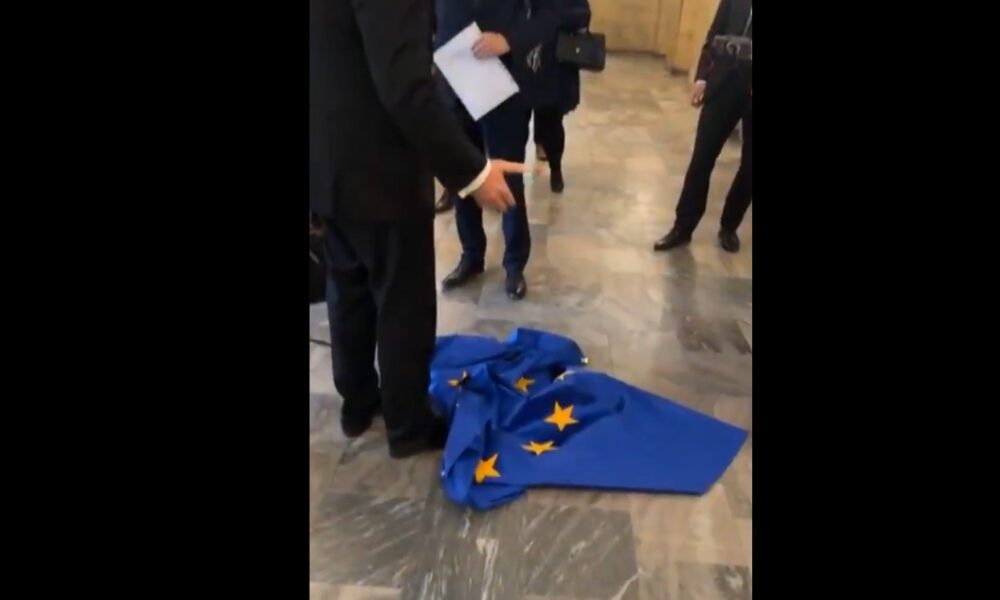‘After the power outages in Spain and Portugal, I thought: the energy transition is not nearly finished yet’
/s3/static.nrc.nl/images/gn4/stripped/data131997549-2e0c50.jpg)
Behind a heavy metal door, protected by a glass wall, countless green lights are blinking on elongated black machines. The white room where they stand in TL-light in Delft University of Technology has the format of an average gym dressing room. The temperature here is always exactly 19 degrees Celsius. Cooling systems are blowing loudly. Colored cables are walking over the ceiling.
Marjan Popov (56), professor of security for sustainable energy systems, opens the space with supercomputers that cost millions of euros with a key. It is surrounded by a metal construction, built to keep the electromagnetic radiation out that is created during the high -voltage tests that are done in the space next to it. It James Bond LabPopov calls this small space. Here he develops new ways to protect the gigantic electricity grid that extends throughout Europe against power disturbances.
The European electricity grid, which are millions of kilometers of cables underground and in the air, will become increasingly important in the coming years, but also more vulnerable. To limit further climate warming as much as possible, it is crucial that countries replace fossil fuels with renewable energy sources such as sun and wind. That makes the power grid more complex and more unstable. The risk of cyber attacks is also increasing. The energy transition is necessary, says Popov, but also brings new technical challenges for the network operators.
The gigantic power outages last week in Spain and Portugal led to concern about the side effects of the energy transition worldwide. The cause of the malfunction is still unknown – research is being done. But it seems strong that the energy transition played a role in this, Popov and other experts think.
The increase in the number of solar panels and wind turbines makes the power grid vulnerable
Popov tells about a long wooden table near the lab, where Delft scientists often meet with energy experts from various network operators in the Netherlands and other energy colleagues.
« The power grid is structured in such a way that supply and demand must be constantly balanced, so that the frequency is always around 50 Hertz, » he starts with his explanation of why the energy transition makes the power grid more vulnerable. At that frequency, or the rhythm in which the electrons move back and forth, all parts, all « system components » of the power grid are set.
When the frequency becomes higher or lower than 50 Hertz, the protection on the components automatically comes into effect and the power falls out to prevent permanent damage. « If a little more electricity from the net is demanded in one place, a little extra will be generated a little extra on the other, » says Popov, moving his hands like a scale. Even if current is completely gone in one place, another source can generate more. That is largely automatic.
« In the classic situation, with many gas and coal-fired power stations, the system has quite some time to respond to frequency change. » The generators of gas and coal-fired power stations have heavy and large rotating turbines that are adjusted to 50 Hertz. If the drive suddenly falls away, those turbines continue to turn because of their heavy weight, they do not suddenly come to a stop. That effect is called inertie. « This makes it possible to keep the balance, and to stabilize the movement of the frequency back and forth. Inertie ensures that sudden changes are filled in the frequency. That is why the power grid has time to respond to changes.
« But in an area with many solar panels and wind turbines there is less inertia. That makes the power grid less robust. If something falls away somewhere, it is lacking that damping effect and the frequency fluctuations can spread rapidly. With a gas plant, for example, we can always control the amount of energy that we do not want to produce. »
What about the major power outage in Spain and Portugal last week?
« We do not yet know exactly what was happening, but what stood out is the speed with which the power grid on the Iberian Peninsula fell out. Something caused a malfunction, after which the power grid in surrounding areas was tried when trying to catch the frequency fluctuations. At the Great Blackout in Italy it was about twelve minutes before the SPangal went for Spangal. SPAUGUT. data, within a minute. Evil.
The reliability of the power grid in the Netherlands is 99,99963 percent, says Tennet. That’s very good
« This is exactly what can happen when many energy sources are in the system that do not have inertia. Instead of that large rotating masses that could dampen frequency changes, the fluctuations were now able to spread rapidly. The security systems caught on and the current fell out at lightning speed. »
Spain has many hydroelectric power stations, which have large rotating masses and therefore inertia.
« Nobody knows what exactly happened in this specific situation. But when solar and wind energy is a large part of the energy mix, such as in Spain, it is generally more difficult to catch the blow if things go wrong. When I read about the power outage, I thought, this is a sign that the energy transition is not a long time. »
On the other side of the glass wall in the Lab in Delft is a dozen computer screens. Researchers here simulate here on supercomputers the worst scenarios that occur when the power grid becomes unstable, to find out how the system can be better protected.
You investigate what must be done to keep the electricity grid robust, while the system is undergoing a huge change.
« Our goal is that we will soon have a system where energy will be fully generated with renewable sources. And that the reliability of the system remains the same. Now that reliability in the Netherlands is 99,99963 percent, says Tennet. That is very good. That amounts to a power outage of approximately 12.8 minutes per year per year. That is not much.
« I am now working on a concept with which we can reduce the risk that a power outage spread quickly like an oil spill, which happened in Spain and Portugal last week. The complexity that the energy transition entails, makes it more difficult to monitor the entire European power grid at the same time, as you can do a smaller area in a sort of island, That area is more intentional, then you will be aware of it if something goes wrong there. Control Islanding. «
Is the power grid not becoming increasingly vulnerable to cyber attacks, now that more and more information is being digitized?
« Yes. In the past, many components were monitored analogue. But we cannot realize the energy transition without digitization. We must continue to monitor the net, and because the demand for electricity is also increasing, we must also keep a close eye on the net so that we can use it optimally.
« Nowadays we monitor the net with the help of internet and fiber optic cables and we put everything in software. That is why cyber attacks have become a bigger problem for network operators. We are not allowed to neglect that threat. We need new ways to be able to protect such a complex energy system against deliberate attacks. »
Why do you find the power grid so interesting?
« I was always interested in electrical energy technology. Especially power is fascinating. How is it possible that something you don’t see and smells so powerful? A man like Nikola Tesla fascinates me, the inventor of important components of the power grid. I have hung a poster from him in my office. I look at him every day. »

:format(webp)/s3/static.nrc.nl/wp-content/uploads/2025/04/15100306/data130733534-5767f1.jpg)
/s3/static.nrc.nl/images/gn4/stripped/data131495621-6ae4ac.jpg)
:format(jpeg):fill(f8f8f8,true)/s3/static.nrc.nl/wp-content/uploads/2019/10/youp5bij3.png)


